Autumn Garden Ideas UK: Brighten Your Space This Season
As the leaves start to change color and the weather cools down, your garden can still be a vibrant and cozy retreat. Autumn presents a unique opportunity to transform your garden with seasonal plants, warm lighting, and creative decorations. How can you create an inviting and beautiful autumn garden in the UK?
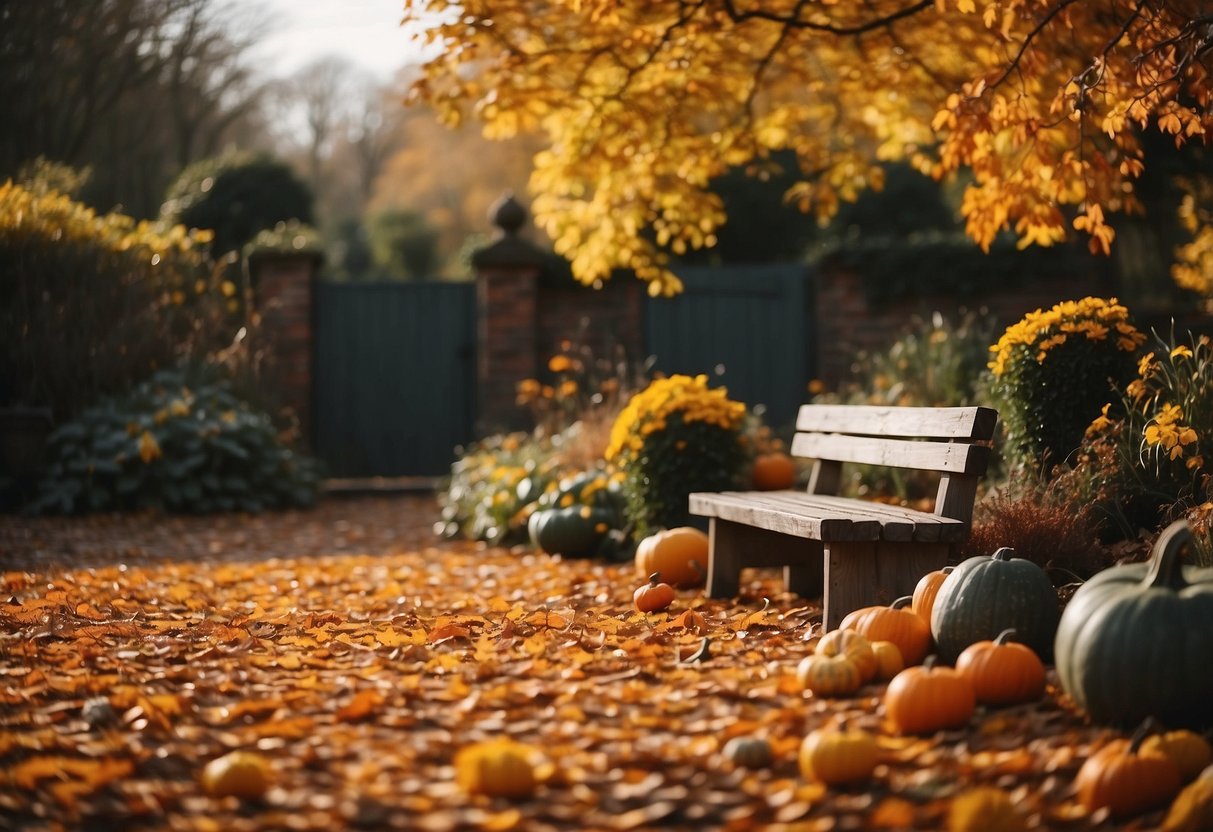
Whether you have a spacious backyard or a small balcony, there are many easy and affordable ways to bring your outdoor space to life this fall. From lovely flowers that bloom in the colder months to charming DIY decorations, you can make the most of your garden all season long.
1) Plant Heathers

Adding heathers to your autumn garden brings color and life. Heathers, low-growing evergreen shrubs, are perfect for the season.
They thrive in acidic soil and love the sun. If your garden has alkaline soil, some heather varieties can still grow well.
Plant them in spring or autumn for the best results. If you’re using containers, use ericaceous compost and ensure good drainage by adding a layer of grit at the bottom.
For more details, check out this growing guide from the RHS.
2) Autumn Crocus
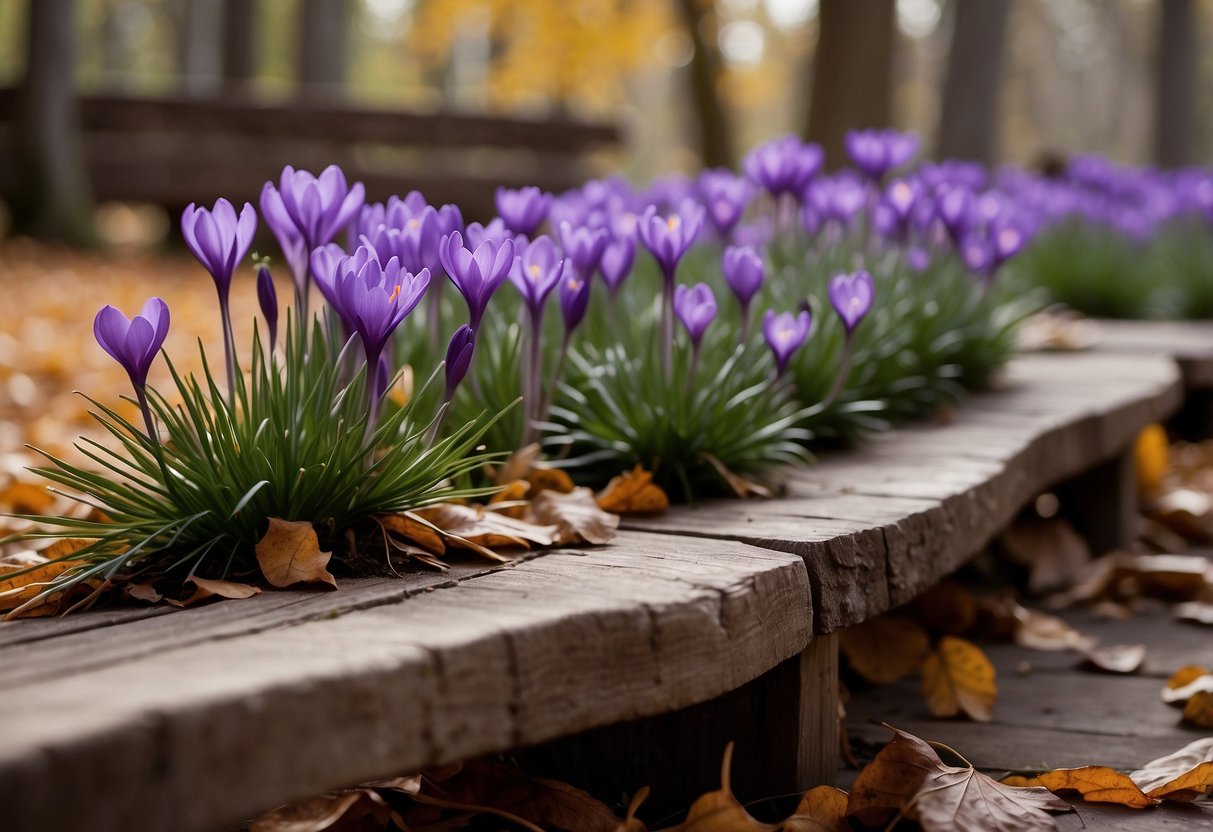
Autumn crocuses add a splash of color to your garden when many flowers are fading. These bulbs should be planted in August for a stunning display in September and October.
Choose a spot with free-draining soil. If you handle the corms, wear gloves since they are poisonous. The saffron crocus is a popular variety to consider.
3) Japanese Anemones

Japanese Anemones are a wonderful addition to your autumn garden. They offer stunning white or pink flowers that bloom from late summer to autumn.
These plants thrive in rich soil and like a lot of rainfall. They can grow quite tall, with flower stems reaching up to 5 feet.
Japanese Anemones are easy to grow and can spread in your garden, lighting up shady areas beautifully.
For best results, plant them in autumn or spring. If you need more plants, you can grow new ones from root cuttings.
Japanese Anemones are great for borders and will keep your garden lively as the season changes.
4) Hardy Cyclamen

The hardy cyclamen is a wonderful choice for your autumn garden. These tuberous perennials are known for their delicate, pink or white blooms. They usually flower in the autumn and add a pop of color to your garden when many other plants are fading.
Plant your cyclamen in partial shade, such as under trees or shrubs. They thrive in well-drained, humus-rich soil. Adding some leaf mould can help create the perfect growing medium.
Hardy cyclamen, like Cyclamen hederifolium or Cyclamen coum, are frost-hardy. This makes them a reliable choice for UK gardens. Enjoy their vibrant blooms each autumn!
5) Winter Heather
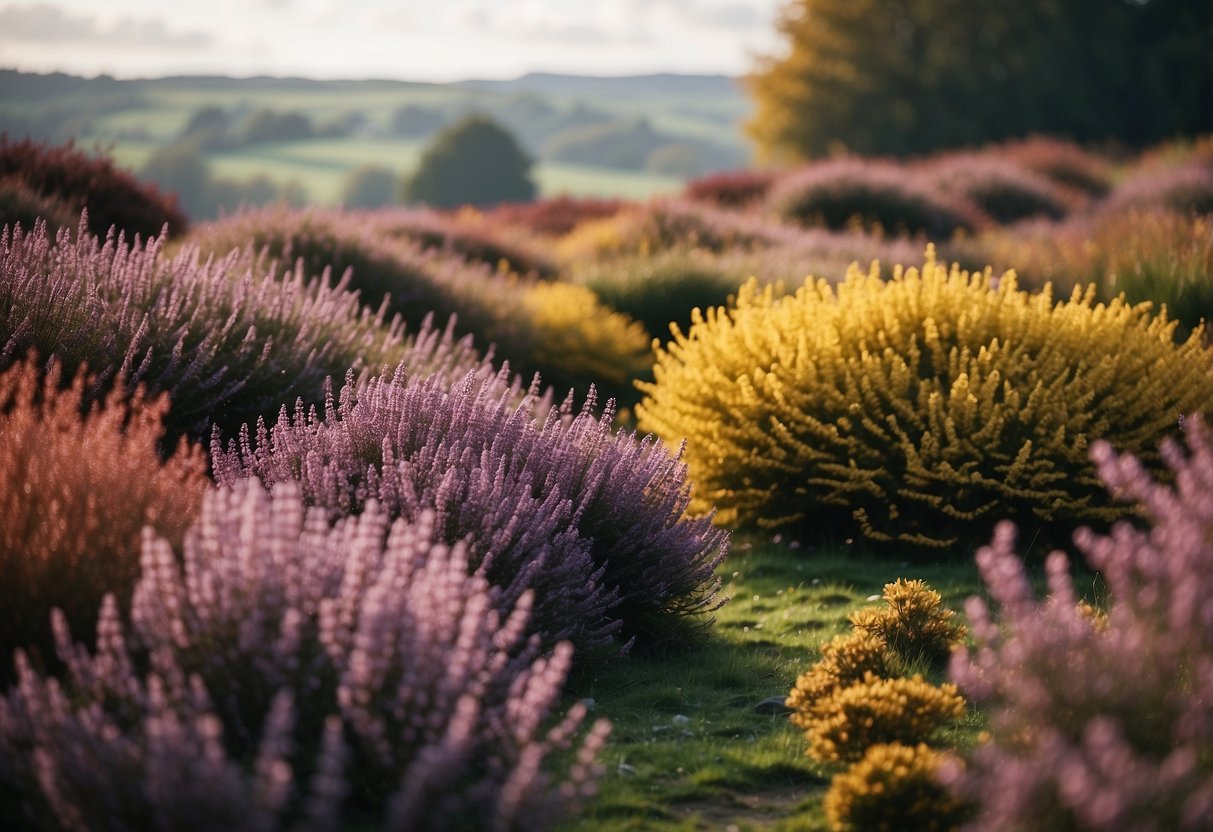
Winter heather is a hardy evergreen that can brighten up your garden during the cold months. These plants are perfect for adding color even when everything else might seem bare.
You can plant winter heather in the fall and enjoy vibrant blooms through the winter. They do well in well-drained, acidic soils. Position them in a spot that gets at least 4 hours of sunlight daily.
Arranging them in containers or garden beds can create a beautiful interlocking carpet effect. They’re also bee-friendly, making your garden a haven for pollinators even in the colder months. Learn more about winter heather here.
6) Sedum ‘Autumn Joy’

Sedum ‘Autumn Joy’ is a standout in any garden during the fall. This hardy perennial blooms from late summer into autumn, providing a vibrant display of pink to deep rose flowers. You’ll love how it transforms your garden!
Pair it with plants like Russian sage for a stunning color contrast. Make sure to plant it in a spot with full sun and good drainage to ensure it thrives.
With minimal care, ‘Autumn Joy’ can become a beautiful focal point in your garden. Enjoy the splash of color it brings when other flowers are fading!
7) Crimson Pygmy Barberry

Crimson Pygmy Barberry is a great choice for autumn gardens in the UK. It’s known for its vibrant, purplish-red leaves that turn even brighter red in the fall. This small shrub grows to about 18-24 inches tall and 30-36 inches wide.
The plant requires little care and thrives in full sun or part shade. It’s deer resistant and drought tolerant. Plus, it offers stunning seasonal interest with small yellow flowers in spring and deep red berries in autumn. These berries remain after the leaves fall, adding color and attracting birds.
8) Acer Palmatum (Japanese Maple)
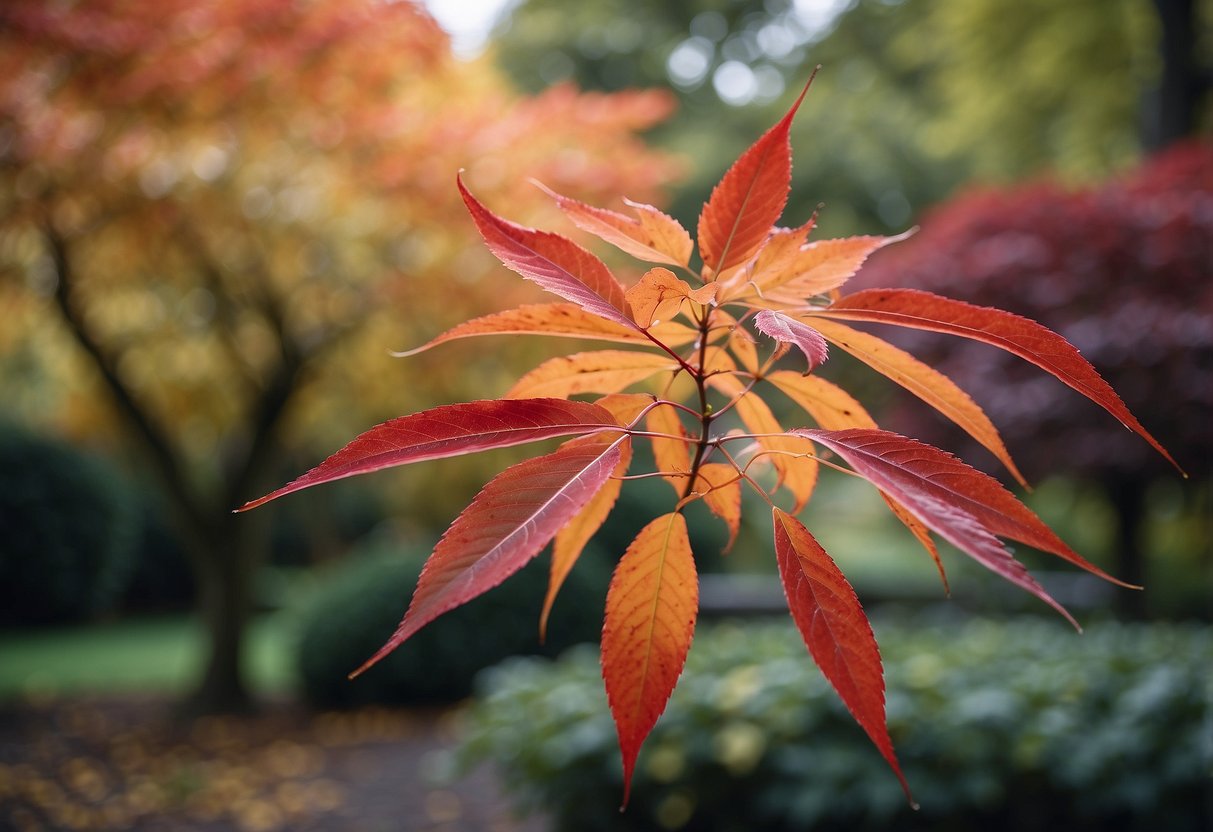
Acer Palmatum, or Japanese Maple, brings stunning colors to your autumn garden. With leaves that turn vibrant hues of red, orange, and yellow, these trees are truly eye-catching.
Japanese Maples prefer a cool, lightly shaded spot. They are perfect for smaller gardens and can even thrive in larger containers.
These trees are low-maintenance and usually only need mulching and fertilizing in spring. You don’t have to worry much about pruning or training them.
For more details on growing these beautiful trees, check out this growing guide.
9) Chrysanthemums

Chrysanthemums bring vibrant color to your autumn garden. These flowers come in various hues like fiery orange, rich red, soft pink, and sunny yellow.
Plant your chrysanthemums in borders or containers in a sunny spot with fertile, well-drained soil. They typically bloom from September to November and might need winter protection.
For healthy growth, leave about 45cm gaps between each plant to ensure good air circulation. This helps prevent diseases and keeps your garden looking its best. Make new plants by taking cuttings, giving you even more beautiful blooms next season.
10) Echinacea ‘Green Envy’
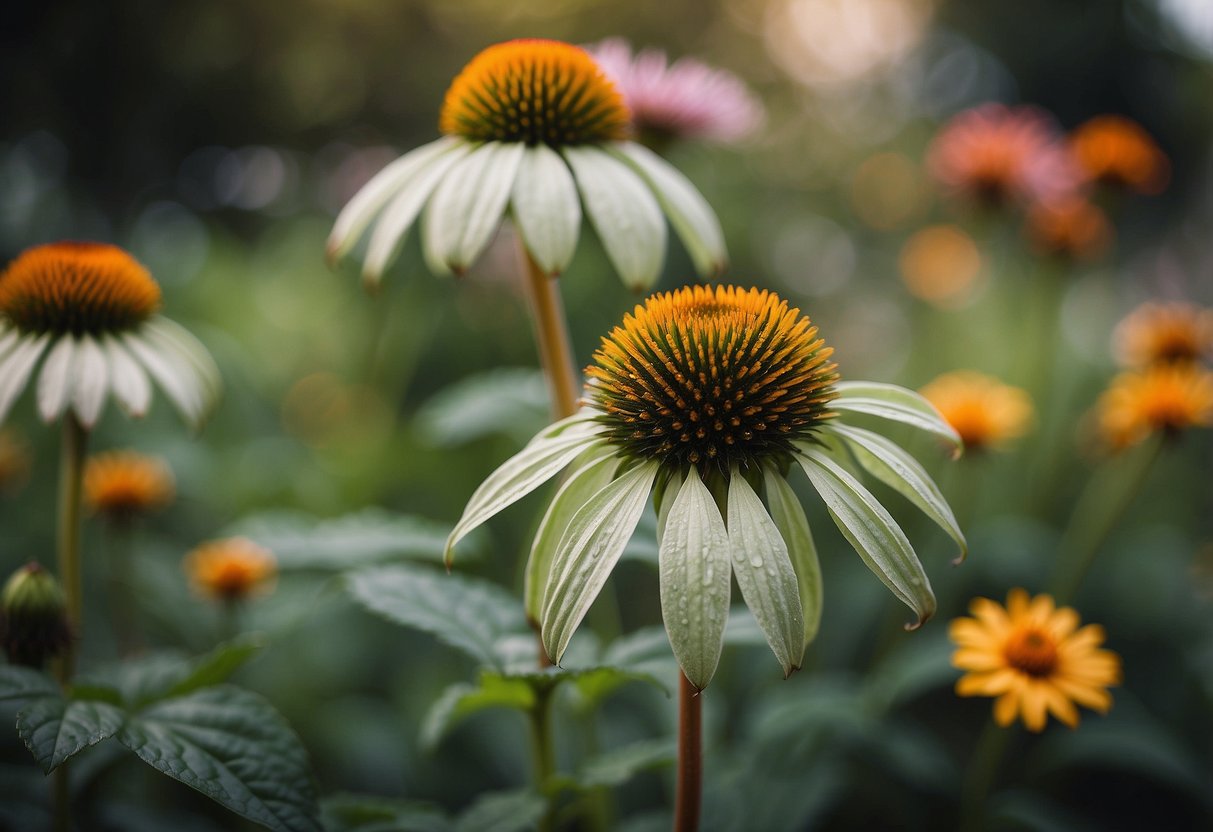
Echinacea ‘Green Envy’ is perfect for your autumn garden. It has lime-green petals that turn pink at the base as they grow. The cone in the center changes from green to purple as it matures.
This plant prefers sunny spots with well-drained soil. It blooms from summer to autumn and attracts birds and pollinators.
You can plant it in borders or mix it with other autumn flowers for a striking display. Echinacea ‘Green Envy’ offers beauty and interest to your garden.
Learn more about how it can enhance your garden here.
Planning Your Autumn Garden

Autumn is the perfect time to refresh your garden with vibrant plants and thoughtful preparation. This guide will help you choose the best plants and prepare your soil for a beautiful and healthy autumn garden.
Choosing the Right Plants
Selecting plants that thrive in autumn ensures your garden looks its best. Trees like Cotinus coggyria ‘Grace’ display stunning colors, making them ideal for autumn. Additionally, shrubs such as hydrangeas offer long-lasting blooms.
Plant hardy perennials like asters or chrysanthemums for vivid color. Ornamental grasses also add texture and movement. They can sway in the autumn breeze, creating a dynamic landscape.
Bulbs like narcissus and alliums can be planted now for spring blooms. This forward-thinking approach keeps your garden colorful year-round.
Consider evergreens for structure and lasting greenery. They provide a backdrop for more colorful plants and help maintain visual interest through the colder months.
Preparing the Soil
Start by clearing fallen leaves from your lawn. This keeps grass healthy and helps prevent mold. Use a rake or a leaf blower and collect leaves for compost.
Add organic matter like compost to enrich your soil. This improves nutrient availability, promoting healthier plant growth.
Test your soil’s pH to ensure it’s suitable for the plants you’re growing. Adjust as necessary using lime to raise pH or sulfur to lower it.
In vegetable plots, sow winter-hardy green manures such as Field Clover and Hungarian Rye Grass. They cover the soil, reduce erosion, and add nutrients when they decompose.
Finally, mulch your garden beds. This helps retain moisture, suppresses weeds, and gradually improves soil structure during the colder months.
Autumn Garden Maintenance

Autumn is the perfect season to prepare your garden for the colder months ahead. By focusing on pruning, watering and fertilizing, and protecting plants from frost, you’ll ensure a healthy and thriving garden come spring.
Pruning and Trimming
Start by cutting back any dead or diseased branches. This helps prevent pests and diseases from taking hold. Trim your hedges now that birds have left their nests.
When cutting hedges, aim for a shape that allows sunlight to reach all parts. Thin out dense shrubs to improve air circulation, which helps reduce fungus and mold. Roses and other perennials should also be pruned to encourage new growth and rejuvenate the plants for next year.
Watering and Fertilizing
Even in cooler weather, gardens need water. Keep watering regularly but reduce the frequency as temperatures drop. Water in the morning to allow plants to dry by nightfall, reducing the risk of mold.
Apply a balanced fertilizer to give plants the nutrients they need before winter. Consider using slow-release fertilizers that break down over time. Clearing leaves from your lawn will also help keep the grass healthy, preventing it from becoming smothered and diseased.
Protecting Plants from Frost
As frost approaches, cover vulnerable plants with garden fleece or cloches at night. Move potted plants to sheltered areas or indoors.
Place a layer of mulch around the base of shrubs and perennials. This helps insulate the roots against frost damage. Harvest any remaining vegetables from your garden to avoid losing them to freeze. For bulbs like tulips, wait until the soil temperature drops before planting to prevent early growth.
Taking these steps will ensure your garden stays healthy through the winter, ready to burst into life again in the spring.







